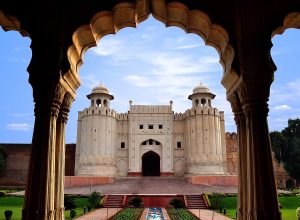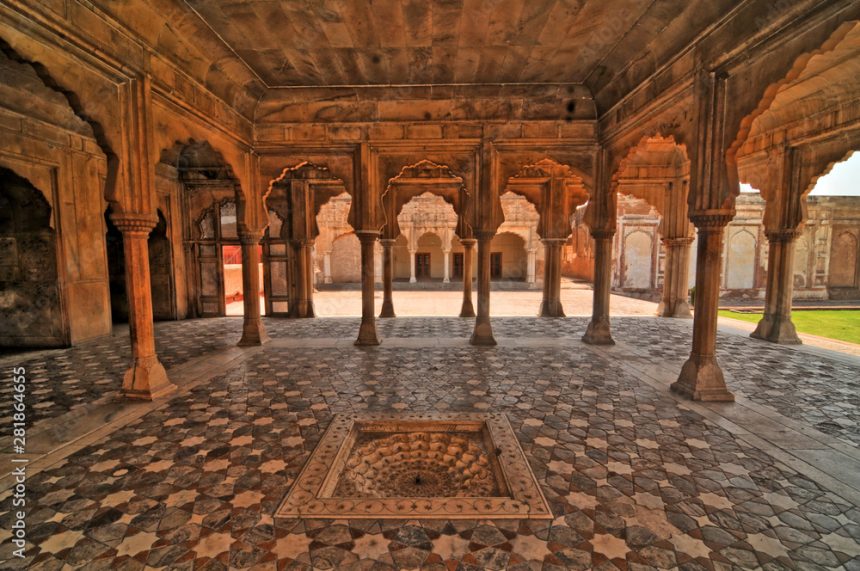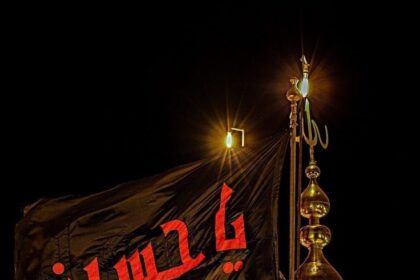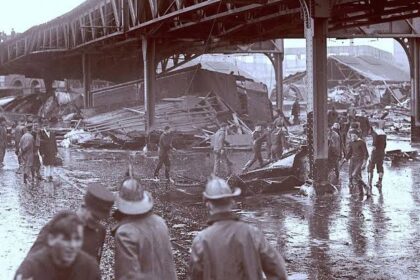Throughout history, the Indian subcontinent has been ruled by numerous empires. Each of these has left its own mark on the land, influencing its culture, heritage, and legacy. One such remarkable witness to the passing of time and power is the Lahore Fort. Hidden within the Walled City of Lahore in Pakistan, the fort has withstood many conquerors bearing all kinds of flags. From the fierce attacks of the Mongols to its flourishing under the Delhi Sultanate, all the way to its days under the British Empire, it acts as the historian of the power dynamics of the Indian subcontinent.
Within it lie not just historical structures, but each brick of the fort represents the architectural effects and signatures that symbolize its importance as the hoarder of tales.
Early History and Conquests
Historical records suggest that the fort has been there for more than a millennium, dating back to the era of Mahmud Ghaznavi in the 11th century. At this period of time, it was built with mud bricks and was a constant bone of contention for invaders. It suffices as a stronghold in the Indus plains, from which further military and political influence could be exhibited. Consequently, we see that the Mongols destroyed the fort in 1241.
After it was rebuilt by Sultan Balban of the Delhi Sultanate, it was again struck down by Tamerlane in his conquest in 1398. On those same foundations, Mubarak Shah had it rebuilt. It remained as such, coming under different rules and influences, with no one being able to hold on to it—at least for some time.
Mughal Era: A Shift to Grandeur
With the foundation of the Mughal Empire in the 16th century and the conquest of Lahore by Mughal emperors, a new era began in the history of the Lahore Fort. What was once a stronghold, held only for its strategic location and military use, was now being built upon as a marvel of architecture and grandeur. It acted as the founding base of the Walled City of Lahore.
During the time of Emperor Akbar, it was changed completely. The old mud foundations were replaced with brick masonry, and the architecture itself took on elements resembling both Hindu and Islamic motifs. Among the famous additions that stand today were the Akbari Gate and Doulat Khana-e-Khas-o-Aam, the latter being halls for public and private audiences for the emperor.

As was often the case with the Mughals, they had direct interactions with the common man as a custom when they arrived in Lahore, within those very same walls. The fort was extended northward toward the bank of the River Ravi, making it a formidable structure in just a few years. These very additions themselves tell how the emperor ruled. Akbar, being influenced by different cultures and traditions, introduced what he thought of as powerful reforms to unite the people, which show themselves in the era’s very architecture.
Jahangir and Shah Jahan: An Artistic Flourish
Following Akbar, the same enthusiasm continued under Jahangir. However, during this time, Persian art flourished, such as the decoration of walls with frescoes and floral designs. One could say that Akbar built the structure, while Jahangir added colors to it. The Jahangir Quadrangle, a commemorative structure, was added during this time.
The fort reached its architectural peak under Shah Jahan’s rule. Shah Jahan, already focused on building majestic structures such as the Taj Mahal, brought similar grandeur to the Lahore Fort. White marble was embedded in the walls, along with numerous precious stones. Among the additional structures added was the Sheesh Mahal (Palace of Mirrors).

It is said that Shah Jahan’s wife once showed a keen desire to see bright stars at night, and so the emperor had a palace built with its walls and dome fixed with mirrors. The numerous reflections of a single candle would light the walls and the roof, imitating the night sky. While the story itself may not be entirely true, it does tell us that the military era of the fort had long passed by then.
Sikh and British Rule: Power and Decline
History again played its hand, and the Lahore Fort could not once again be controlled by one empire. In 1799, Ranjit Singh conquered the fort and founded the Sikh Empire. He repurposed the fort for campaigns and reinforced its defenses. During this time, Ranjit also possessed the famous Koh-i-Noor diamond, which he stored in the Lahore Fort, further symbolizing it as a center of power.
During this period, many Sikh Gurdwaras were added, and even the Moti Mosque was converted into one. Hindu temples, such as the Naang Temple, were also built, making the fort an inter-religious space.
Fast forward to British colonialism and their conquest of Lahore. It was a time of rebellions and constant shifts of power. The British saw the Lahore Fort as nothing more than a military establishment. The constant loading of cannons and fortifications led to the loss of the fort’s maintained grandeur. From being a symbol of majestic beauty, it became a symbol of might and power for the British.
Post-Partition and Modern Era
At last, in 1947, the fort witnessed itself moving into the modern era—the post-Partition period, where it came under the care of Pakistan. Since then, numerous governments have tried to protect the fort from wear and tear, and in 1981, it was declared a UNESCO World Heritage Site.

A Monument to the Ephemeral Nature of Power
The Lahore Fort is not just a spectacle for the eyes, but a testament to the reality of power. A man can cast an illusion that he possesses it, but with time, everything is lost. Many empires hoisted their flags at this very fort, yet all dwindled, leaving behind only bricks and stones, decaying over the years.
It raises the question: Was it truly beneficial to erect such structures in the first place, when one could have focused on other things? One thing is clear—when the halls of the fort are traversed today, it is not just seamless roads but a palimpsest of history that is walked upon.
It is indeed a miracle of both time and culture—one that will transcend this era and carry our tales to those who come next.
















